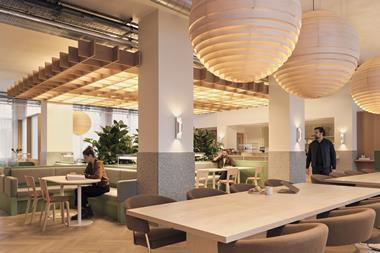Scaled back plans for Chelsea Barracks are about to be resubmitted to Westminster Council, the site’s owner Qatari Diar said today.
Qatari Diar, which is wholly owned by the Qatari government, has reduced the number of apartments in the scheme by 13% from 638 to 552.
The plans, on which Candy & Candy is project manager and interior designer, have been reduced following talks with stakeholders such as the neighbouring Royal Hospital Chelsea, the Belgravia Residents’ Association and the government’s architecture watchdog the Commission for Architecture and the Built Environment.
Qatari Diar has assumed in the plans that a chapel in the middle of the site, currently subject to a listing application being considered by the Secretary of State for Communities and Local Government, will be demolished.
The apartment blocks in the scheme have been reduced in length in response to concerns from the Belgravia Residents’ Association and the Gatliff Close Residents’ Association about the bulk of the scheme impacting on surrounding homes.
This has involved reducing the height of the tallest building on the site, a 13-storey affordable housing block, to eight storeys.
Where some of the blocks have been shortened Project Blue, the holding company for the scheme, has replaced them with four-storey high ‘garden pavilions,’.
In response to concerns raised by Westminster Council’s planning committee the amount of publically accessible park has been increased by 300% to 6.2 acres.
Qatari Diar has also introduced a primary care facility into the plans following a request from Westminster Primary Care Trust.
A spokesman for Project Blue said: ‘Over the past six months we have implemented a very extensive outreach programme to our neighbours and stakeholders, during which we have listened attentively and responded positively to their concerns.
‘Consequently, on the key issues of height, massing and the public space, the scheme that we are now submitting for planning consent has achieved a high degree of consensus although we accept that we will never achieve unanimity on the architecture, which is always a matter of subjective opinion.’































No comments yet